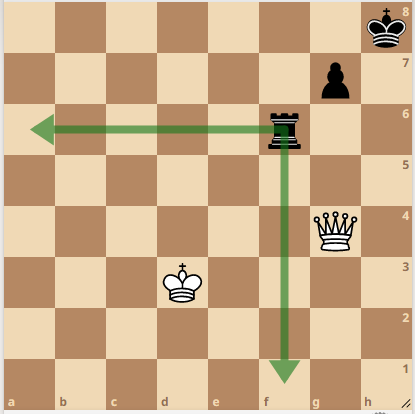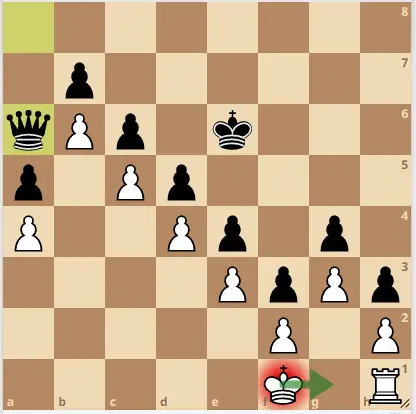In the game of chess, players must navigate through a complex web of potential strategies and moves, constantly analyzing the board and anticipating their opponent’s next move.
One such strategy that can be employed is the concept of a fortress. Used to protect against an opponent’s attack or to secure a draw in a seemingly lost game, fortresses can be a powerful tool in a player’s arsenal.
In this article, we will explore the concept of a fortress in chess, examining its various forms and discussing the strategies that players can use to create and break them.
Whether you’re a seasoned chess player or just starting out, understanding the mechanics of a fortress can be an invaluable addition to your game.
What Is A Fortress In Chess
In chess, a fortress is a position in which a player has arranged their pieces in a manner that prevents their opponent from making any progress or breaking through their defenses, despite having a material or positional advantage. It is a defensive strategy employed by the player who is trying to salvage a draw or a win in a seemingly lost position.
A fortress can occur in various forms, but it typically involves creating a solid block of pawns and pieces that the opponent cannot penetrate or break down.
In a fortress, the defending pieces are placed in such a way that they control all the key squares and lines of attack, making it impossible for the attacking side to gain any advantage.
Fortresses are often seen in endgame scenarios where there are only a few pieces left on the board, and the position is highly simplified.
They can be difficult to break down, and a player may have to resort to some unconventional or risky moves to try and break through the defenses.
However, if the defending player can maintain their fortress, they can often force a draw or even win the game.
Examples Of Fortresses
Bishop pawn fortress

Black just played the move h4 which closes up the entire position. White cannot try to win or break through the position. Though white is up a whole queen, the position is drawn.
Rook pawn fortress

The black rook can defend against checks and the white king is closed off from accessing the f, g and h files. White cannot make any progress even with the material advantage.
Stalemate fortress

White to move plays Kg1. The black queen cannot penetrate the position or it’s stalemate. If black tries Qb5, white will win the pawn race.
How To Build A Fortress?
Building a fortress in chess requires careful planning and execution. Here are some general guidelines for building a fortress:
Identify the critical squares
Identify the squares that your opponent needs to control to penetrate your position, and make sure that your pieces control those squares.
For example, if your opponent needs to control a square to place their rook on the seventh rank, make sure that you have a piece that can attack that square.
Create a solid pawn structure
Build a solid pawn structure that is difficult for your opponent to break through. This may involve creating a pawn chain or pawn wedge that covers critical squares and provides support for your pieces.
Activate your pieces
Make sure that all of your pieces are in good positions, and that they are actively contributing to the defense of your position. Try to coordinate your pieces so that they are working together to control key squares and lines of attack.
Simplify the position
In a fortress, the position is often simplified, with fewer pieces on the board. Try to exchange pieces if possible to reduce the number of attacking options your opponent has.
Be patient
Building a fortress takes time and patience. It is essential to stay calm and not to panic if your opponent appears to be making progress. Keep focusing on maintaining your position and finding the best defensive moves.
Overall, building a fortress in chess requires a strong understanding of positional chess and the ability to coordinate your pieces effectively.
How To Break Your Opponent’s Fortress
Breaking your opponent’s fortress in chess can be a difficult task, as fortresses are designed to withstand attacks and maintain a strong defensive position.
However, there are several strategies that you can use to break through your opponent’s defenses and secure a win.
One approach is to create a weakness in the fortress by attacking a pawn or piece that is essential to the structure. This can force your opponent to divert their attention away from their defensive position, allowing you to create an opening for a successful attack.
Another strategy is to use your pieces to control key squares on the board, limiting your opponent’s mobility and restricting their ability to maintain their fortress.
By controlling the flow of the game and limiting your opponent’s options, you can force them to make mistakes and create opportunities for a successful attack.
It’s also important to be patient and persistent when trying to break a fortress. Fortresses are designed to withstand attacks, so it may take several moves and careful planning to create an opening.
By staying focused and adapting your strategy as the game progresses, you can increase your chances of breaking through your opponent’s defenses and securing a win.
Sacrificing Pieces To Break Fortress
Sacrificing a piece to break your opponent’s fortress can be a risky strategy, as it can leave you with a material disadvantage if the sacrifice is not successful.
However, in certain situations, sacrificing a piece can be a powerful tool for breaking through your opponent’s defenses and securing a win.
Before considering a sacrifice, it’s important to carefully analyze the position and weigh the potential risks and rewards.
If the sacrifice creates a clear advantage, such as a winning attack or a chance to promote a pawn, it may be worth the risk. However, if the sacrifice does not create a clear advantage or leads to a weaker position, it’s best to avoid it.
Ultimately, the decision to sacrifice a piece to break your opponent’s fortress should be based on a careful evaluation of the position and an understanding of the potential risks and rewards. As with any strategy in chess, it’s important to weigh the potential benefits and drawbacks before making a move.
Final Thoughts
In summary, a fortress is a defensive position on the chessboard that can be used to protect against an opponent’s attack or to secure a draw in a seemingly lost game.
Fortresses come in various forms and require careful planning and execution to be successful. Understanding the mechanics of a fortress can be an invaluable tool for chess players at all levels, allowing them to better anticipate and react to their opponent’s moves.
Breaking through a fortress can be a challenging task, requiring patience, persistence, and careful analysis of the position.
Players can use various strategies, such as creating weaknesses in the fortress or controlling key squares on the board, to break through their opponent’s defenses and secure a win. While sacrificing a piece to break a fortress can be a risky strategy, it can also be a powerful tool if used wisely.
In the end, fortresses are a fundamental part of chess strategy and remain an important concept for players to understand and use.
Whether you’re a seasoned player or just starting out, mastering the art of the fortress can help you to become a more effective and successful chess player.


